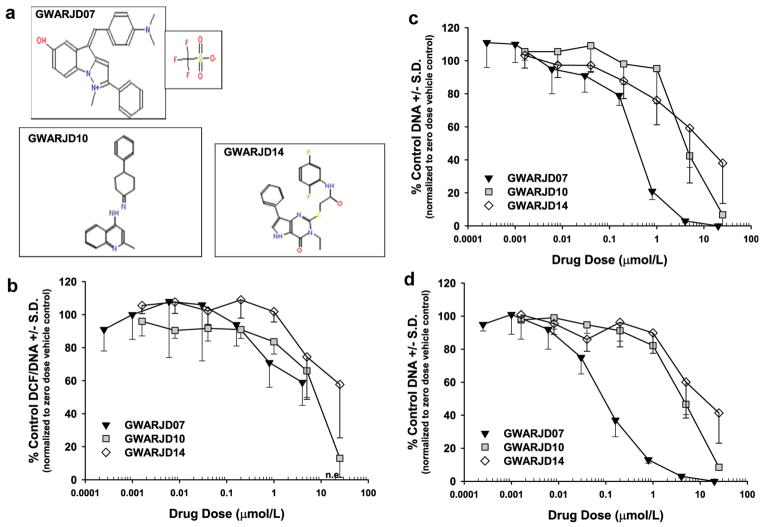Fig. 3.
ROS and growth analysis: compounds (structures shown in a) were tested for their ability to block androgen-induced ROS production (b) and inhibit androgen-dependent (c) and androgen-independent (d) prostate cancer cell growth. (b) Dose response effect of compounds on ROS in LNCaP treated with 1 nmol/l R1881 androgen that induces AR-JunD interaction and subsequent ROS over-production. (c) Dose responses effect on growth of androgen-dependent LNCaP cells in growth stimulatory androgen complete medium (F5). (d) Dose response effect on growth of castrate-resistant variant LNCaP C4-2 cells in androgen-deprived medium (F1C4). All treatments were carried out over 96 hr. Data points are the average from three experiments with N = 6 per condition in each experiment (#s 10 and 14) or N = 6 in one experiment (#7). n.e., not evaluable due to extremely low DNA values.

